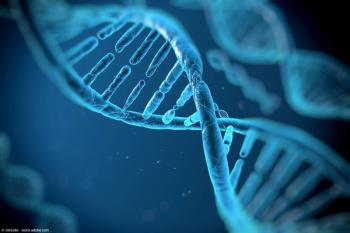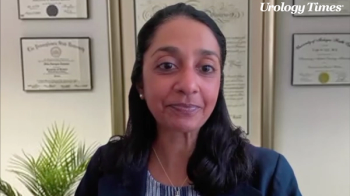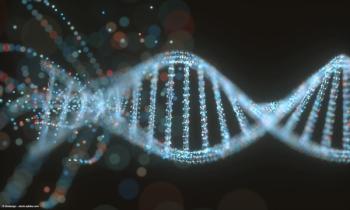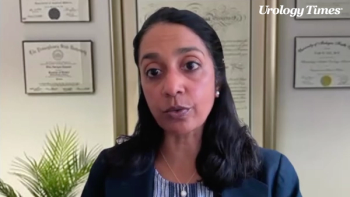
Novel biomarker emerges for salvage RT approach in biochemically recurrent prostate cancer
A higher score on PORTOS, an expression signature of 24 DNA damage repair and immune pathway genes, predicted improved response to dose-intensified salvage radiotherapy after radical prostatectomy in patients with biochemically recurrent prostate cancer.
An analysis from the phase 3 SAKK 09/10 trial presented at the 2022 ASTRO Annual Meeting showed that PORTOS, an expression signature of 24 DNA damage repair and immune pathway genes, has the potential to predict which patients will benefit from dose-intensified salvage radiotherapy (SRT) after radical prostatectomy.1,2
Overall, the SAKK 09/10 trial (NCT01272050) compared conventional-dose SRT (64 Gy) with dose-intensified SRT (70 Gy). Among patients with higher scores on the PORTOS gene expression signature, 5-year follow-up data showed that patients receiving dose-intensified SRT experienced an absolute benefit of 45% in clinical-progression-free survival (CPFS) vs those receiving the standard dose; likewise, the absolute CPFS benefit was negative at -10% for dose-intensified SRT vs standard SRT in men with lower PORTOS scores at 5 years (p-interaction = .003).
“Our findings suggest that the Decipher PORTOS signature may be a valuable tool to help physicians better identify those prostate cancer patients who should receive dose-intensified salvage radiotherapy when their disease recurs following radical prostatectomy,” lead author Alan Dal Pra, MD, member of Sylvester Comprehensive Cancer Center, director of Clinical Research and associate professor of Radiation Oncology at the University of Miami Miller School of Medicine, stated in a news release.
“Dependent on further studies, this could be the first predictive biomarker to help physicians personalize radiotherapy dose in the postoperative prostate cancer setting," added Dal Pra.
The multicenter SAKK 09/10 trial accrued patients with biochemically recurrent prostate cancer following radical prostatectomy. Overall, 350 patients were evenly randomized in a 1:1 ratio to conventional-dose or dose-intensified salvage radiotherapy SRT. The median PSA at randomization was 0.3 ng/ml (range, >0.1 to 2 ng/mL). Concurrent androgen suppression or pelvic nodal radiotherapy was not allowed.
At a median of 6.2 years’ follow-up, the primary study analysis showed no benefit with dose-intensified SRT vs conventional SRT. The median freedom from biochemical progression was 8.2 years in the 64 Gy arm vs 7.6 years in the 70 Gy arm (hazard ratio, 1.14; log-rank p = 0.4).3
The analysis shared at the ASTRO meeting included 226 patients from the trial with available transcriptome data. In this group, 16% had high PORTOS radiation response and 84% had lower PORTOS.
In patients with high PORTOS, the 5-year CPFS was 94% in patients who received dose-intensified SRT compared with 49% among patients treated with conventional SRT (log-rank p = .006).
The researchers also reported that interaction analysis showed that there were multiple end points for which PORTOS had a statistically significant interaction with RT dose, including freedom from biochemical progression (interaction p = .04), clinical progression-free survival (interaction p = .003), and metastasis-free survival (interaction p = .037).
“This study demonstrates how gene-expression signatures can help identify the men who are most likely to benefit from more radiation, and help inform physician and patient decisions regarding their radiation treatment after surgery,” Elai Davicioni, PhD, medical director for Urology at Veracyte, the developer of PORTOS, stated in the news release.
References
1. New Data Suggest Decipher GRID-Derived Genomic Signature Can Help Identify Men with Prostate Cancer Who Should Receive High-Dose Radiotherapy. Published online October 25, 2022. Accessed November 10, 2022. https://bwnews.pr/3WTtPns
2. Dal Pra A, Zwahlen DR, Liu VY, et al. Prognostic and Predictive Performance of a 24-Gene Post-Operative Radiation Therapy Outcomes Score (PORTOS) in a Phase 3 Randomized Trial of Dose-Intensified Salvage Radiotherapy after Radical Prostatectomy (SAKK 09/10). Int J Radiat Oncol Biol Phys. 114(3);S37-S38. doi: 10.1016/j.ijrobp.2022.07.398
3. Ghadjar P, Hayoz S, Bernhard J, et al.Dose-intensified Versus Conventional-dose Salvage Radiotherapy for Biochemically Recurrent Prostate Cancer After Prostatectomy: The SAKK 09/10 Randomized Phase 3 Trial. Eur Urol. 2021;80(3):306-315. doi: 10.1016/j.eururo.2021.05.033
Newsletter
Stay current with the latest urology news and practice-changing insights — sign up now for the essential updates every urologist needs.


















